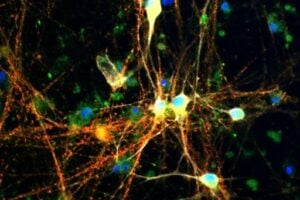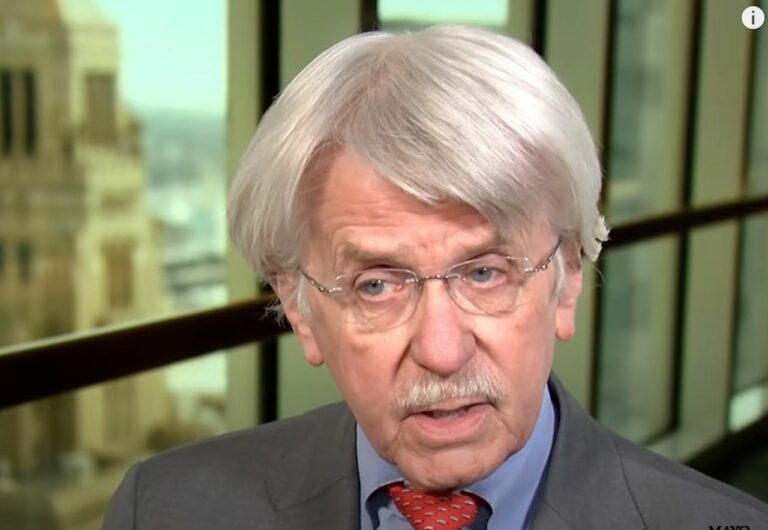VIDEO & ARTICLE:
Transcranial Magnetic Stimulation improves memory. See the promise it holds for treating dementias such as Alzheimer’s, CTE or vascular dementia.
Stimulating a particular region in the brain via non-invasive delivery of electrical current using magnetic pulses, called Transcranial Magnetic Stimulation, improves memory, reports a new Northwestern Medicine® study.
The discovery opens a new field of possibilities for treating memory impairments caused by conditions such as stroke, early-stage Alzheimer’s disease, traumatic brain injury, cardiac arrest and the memory problems that occur in healthy aging.
Continued below video…
“We show for the first time that you can specifically change memory functions of the brain in adults without surgery or drugs, which have not proven effective,” said senior author Joel Voss, assistant professor of medical social sciences at Northwestern University Feinberg School of Medicine. “This noninvasive stimulation improves the ability to learn new things. It has tremendous potential for treating memory disorders.”
The study will be published August 29 in Science.
The study also is the first to demonstrate that remembering events requires a collection of many brain regions to work in concert with a key memory structure called the hippocampus — similar to a symphony orchestra. The electrical stimulation is like giving the brain regions a more talented conductor so they play in closer synchrony.
“It’s like we replaced their normal conductor with Muti,” Voss said, referring to Riccardo Muti, the music director of the renowned Chicago Symphony Orchestra. “The brain regions played together better after the stimulation.”
The approach also has potential for treating mental disorders such as schizophrenia in which these brain regions and the hippocampus are out of sync with each other, affecting memory and cognition.
TMS Boosts Memory
The Northwestern study is the first to show TMS improves memory long after treatment. In the past, TMS has been used in a limited way to temporarily change brain function to improve performance during a test, for example, making someone push a button slightly faster while the brain is being stimulated. The study shows that TMS can be used to improve memory for events at least 24 hours after the stimulation is given.
Finding the Sweet Spot
It isn’t possible to directly stimulate the hippocampus with TMS because it’s too deep in the brain for the magnetic fields to penetrate. So, using an MRI scan, Voss and colleagues identified a superficial brain region a mere centimeter from the surface of the skull with high connectivity to the hippocampus. He wanted to see if directing the stimulation to this spot would in turn stimulate the hippocampus. It did.
“I was astonished to see that it worked so specifically,” Voss said.
When TMS was used to stimulate this spot, regions in the brain involved with the hippocampus became more synchronized with each other, as indicated by data taken while subjects were inside an MRI machine, which records the blood flow in the brain as an indirect measure of neuronal activity.
The more those regions worked together due to the stimulation, the better people were able to learn new information.
How the Study Worked
Scientists recruited 16 healthy adults ages 21 to 40. Each had a detailed anatomical image taken of his or her brain as well as 10 minutes of recording brain activity while lying quietly inside an MRI scanner. Doing this allowed the researchers to identify each person’s network of brain structures that are involved in memory and well connected to the hippocampus. The structures are slightly different in each person and may vary in location by as much as a few centimeters.
“To properly target the stimulation, we had to identify the structures in each person’s brain space because everyone’s brain is different,” Voss said.
Each participant then underwent a memory test, consisting of a set of arbitrary associations between faces and words that they were asked to learn and remember. After establishing their baseline ability to perform on this memory task, participants received brain stimulation 20 minutes a day for five consecutive days.
During the week they also received additional MRI scans and tests of their ability to remember new sets of arbitrary word and face parings to see how their memory changed as a result of the stimulation. Then, at least 24 hours after the final stimulation, they were tested again.
At least one week later, the same experiment was repeated but with a fake placebo stimulation. The order of real stimulation and placebo portions of the study was reversed for half of the participants, and they weren’t told which was which.
Both groups performed better on memory tests as a result of the brain stimulation. It took three days of stimulation before they improved.
“They remembered more face-word pairings after the stimulation than before, which means their learning ability improved,” Voss said. “That didn’t happen for the placebo condition or in another control experiment with additional subjects.”
In addition, the MRI showed the stimulation caused the brain regions to become more synchronized with each other and the hippocampus. The greater the improvement in the synchronicity or connectivity between specific parts of the network, the better the performance on the memory test. “The more certain brain regions worked together because of the stimulation, the more people were able to learn face-word pairings, ” Voss said.
Using TMS to stimulate memory has multiple advantages, noted first author Jane Wang, a postdoctoral fellow in Voss’s lab at Feinberg. “No medication could be as specific as TMS for these memory networks,” Wang said. “There are a lot of different targets and it’s not easy to come up with any one receptor that’s involved in memory.”
The Future
“This opens up a whole new area for treatment studies where we will try to see if we can improve function in people who really need it,” Voss said.
His current study was with people who had normal memory, in whom he wouldn’t expect to see a big improvement because their brains are already working effectively.
“But for a person with brain damage or a memory disorder, those networks are disrupted so even a small change could translate into gains in their function,” Voss said.
In an upcoming trial, Voss will study the electrical stimulation’s effect on people with early-stage memory loss.
Voss cautioned that years of research are needed to determine whether this approach is safe or effective for patients with Alzheimer’s disease or similar disorders of memory.
Source:
Northwestern University.
The original article was written by Marla Paul.
Journal Reference:
- J. X. Wang, L. M. Rogers, E. Z. Gross, A. J. Ryals, M. E. Dokucu, K. L. Brandstatt, M. S. Hermiller, J. L. Voss. Targeted enhancement of cortical-hippocampal brain networks and associative memory. Science, 2014; 345 (6200): 1054 DOI:10.1126/science.1252900











@ Dr.Voss – I am extremely interested in ur study with electrical stimulations on people with memory issues (myself). early stages-yes-